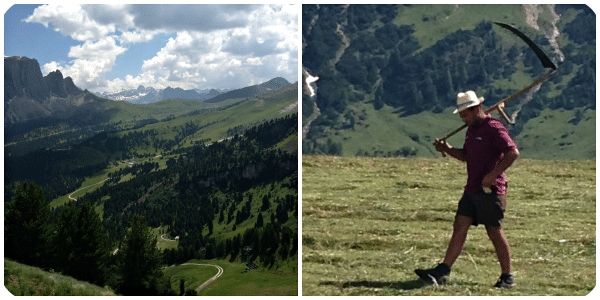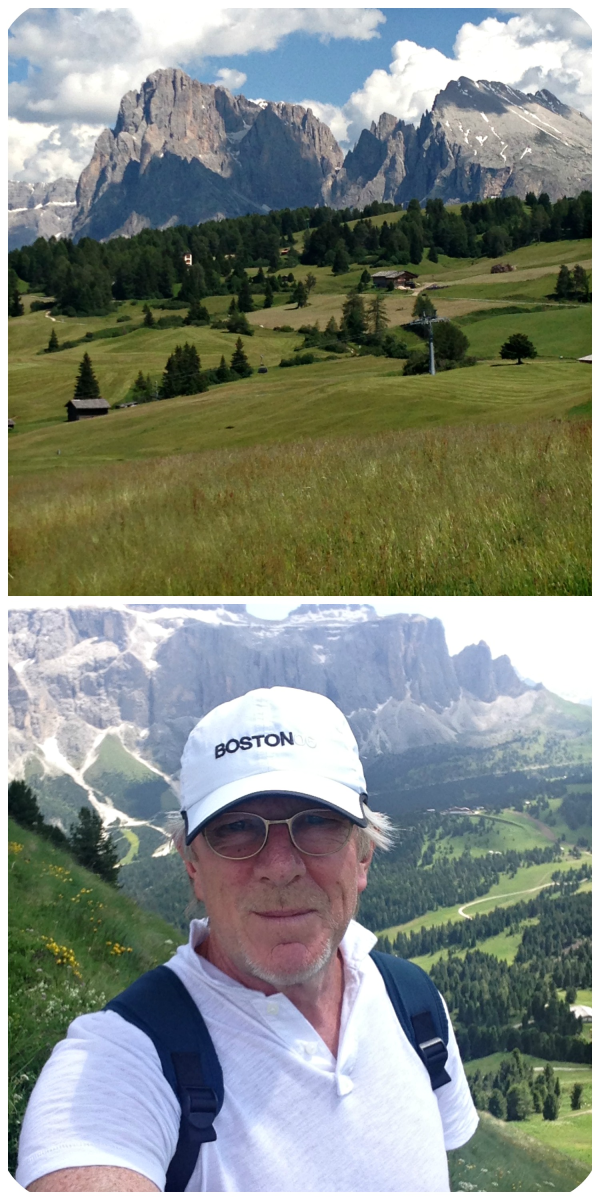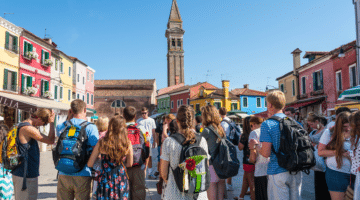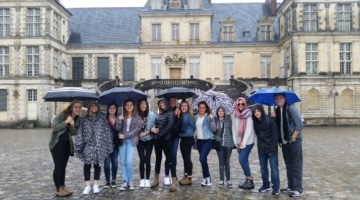The Perks of the Dolomites in the Summer

After a minor hassle at the car rental counter in Venice’s Marco Polo Airport, I drove with my Stradale d’Italia Atlas away from the busy tourist town and up through the northern lakes of Italy; making a stop in Sirmione on Lake Garda for a lunch.
My aim was to go on a scenic route to the Dolomites to look at some possible itinerary ideas for our groups while taking in some cool mountain air and maybe escaping the heat that had engulfed all of Europe.
I have been to the Dolomites to ski a couple of times in the past few years. It has the largest connected network of ski trails in the world. However, I had never visited in the summertime before.
It’s quite something.
The first thing that is clear as you climb north beyond the lakes and across the spectacular vineyards that hang on the lower slopes of the mountains is that the signage shifts language. Entering the Südtirol, or in Italian “Alto Adige,” named after the river, you have the distinct feeling that you are not in Italy anymore. The shape of the churches, the colors of the buildings, dare I say it — the overall cleanliness of the towns, and the lack of chaos indicate that you may be in Austria or Germany. Guess what? You really are!
After Austria was defeated in the First World War, the Italians grabbed the Südtirol and renamed it the “Alto Adige.” Every German name was given an Italian name –- Bozen became Bolzano, St. Ulrich became Ortisei, Kastelruth became Castelrotto, and so on.
The government wooed the German-speaking population and their politicians with vast amounts of money and economic incentives. Thus, the Südtirol is the richest area in all of Italy. Needless to say, they do not exactly embrace the Italian side of their heritage. Mainly, because there is none! Political parties often talk of secession but given their relative amount of independence and the money that goes into keeping them happy, these German speakers have a pretty good deal.
The area is absolutely spectacular.
The Dolomites with their pinkish hue are not as foreboding as the neighboring Alps in Switzerland and France. You can stay in towns such as Ortisei or Castelrotto (or as I did in Fiè allo Sciliar) and from there you can take advantage of the highly efficient lift system which connects the various resorts together. Once atop the plateau, there are fabulous walks, mountain bikes for hire, and even lakes to swim in. In the distance, the higher mountains still have snow on them.
However, I focused on the Alpe di Siusi, which is Europe’s largest high-alpine meadow and separates two of the most famous valleys in the Dolomites, the Val de Fassa and Val Gardena. The altitude is not even 7,000 feet, but you are up there in the mountains with phenomenal views that seem to stretch to the horizon.
While I was there, the farmers were busy haying, the cows were grazing with their bells on, and there was a steady flow of serious hikers with backpacks and poles heading to the higher terrain. The colors are beautiful and wildflowers of blues, yellows, and reds are everywhere. From a distance, it appears that the mountains have been carpeted with a gorgeous tapestry.
Alpine huts dot the landscape and are for rent in both the summer and winter seasons. The sun holds along the flat plains for most of the day. There are restaurants discreetly tucked in between the trails and using the system of gondolas and simple ski lifts, you can traverse up to around 10,000 feet.
The walks are incredible, the views are amazing, and at the end of the day, the food is extraordinary, not to mention the glorious wines from the vineyards below. They are some of the best in the world.
This is a fabulous place to wander off the beaten path. Everything works and remarkably we are still in Italy. If you have never been to the Dolomites in the summer, it is a well worthwhile two-day deviation from Venice.
Watch out for itineraries to follow. This is a great winter and summer break excursion.
Peter Jones is the founder and President of ACIS. Knowing the important difference between a trip that’s mediocre and one that’s extraordinary, he built ACIS from a deep belief and understanding that teachers and students deserve the best—from itinerary development to hotels to perhaps most importantly, the people hired to guide teachers and students throughout the journey.











